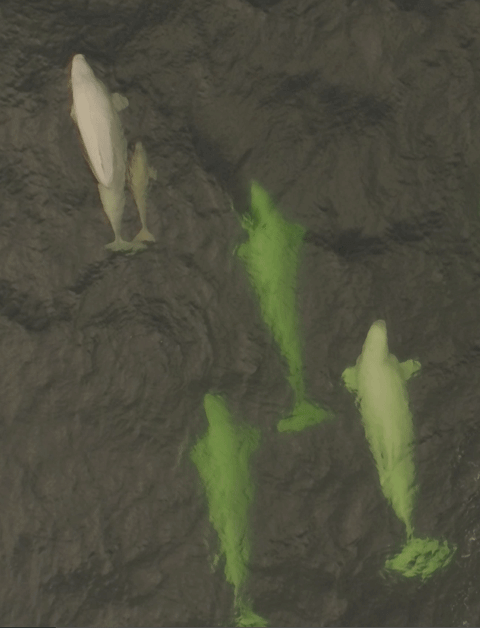Drones offer researchers new means of obtaining data on wild animal populations. They help enlarge the field of view of a marine area from a research vessel or from shore, reduce the time required to locate animals, facilitate surveys, and allow seldom documented behaviours to be observed in the field.
Thousands of beluga mothers, accompanied by their young, spend their summers in Cunningham Inlet. They belong to the Eastern High Arctic – Baffin Bay population. Researcher Valeria Vergara of the Vancouver Aquarium spent part of the summer studying communication between these females and their young in a pristine environment. Using drones has tremendously facilitated censusing individuals with an accuracy that would otherwise be impossible with the naked eye. A pilot project conducted in collaboration with the GREMM continued in the St. Lawrence Estuary to assess the impact of noise on communication between mothers and newborns. Thanks to the use of drones, group composition and the age of young animals have been estimated with high precision. Furthermore, natural behaviours rarely observed (e.g. nursing and reproduction) have been “caught on the fly” by the remote controlled aircraft.
According to the GREMM’s Robert Michaud, it is a tool worth studying and taking into consideration for research and conservation.
To see aerial images taken by a drone during these two projects dedicated to belugas, visit the The Nature of Things (CBC).





